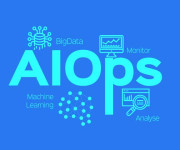The 3 Critical Drivers of IoT Project Delivery

Most of us already have smart speakers, or are considering getting one for ourselves. Its ability to comprehend commands issued makes it indispensable to homes and offices alike. But how exactly does it do this? From wanting the volume up to setting alarm reminders, it all comes down to the data that transmits across interconnected devices, transforming cognitive abilities of man and machine to a reality.
Projects under the IoT wing are technically-complex and richly diverse, requiring a deep dive into the critical drivers that not only let you manage expectations but sets a realistic progression curve, some of which are as follows –
Resource planning with a hyper-specialty skills inventory
Given that IoT projects involve several hyper-specialized skills, as demands fluctuate, the gap between the right people and projects would have to be bridged in time to avoid losing out on high-visibility, high return work.
In this regard, a resource management tool lets you onboard resources with an experienced eye and umbrella of skills. Its skills inventory profiles the most sought-after and available resources such that all IoT projects are optimally staffed. With an extensive database that plugs in timesheets, billable effort estimates, available hours and future projections, the skills inventory lets you know how your staff’s competencies are placed for the duration in question. It even tracks how skills are shared in multi-project activities.
The tool’s reporting analytics capture how your resource pool is positioned on inflight and upcoming projects. It points you to under and over-utilized staff to correct schedule imbalances instantly. Further, it weighs the existing capacity against the project pipeline to let you not only plug skill shortages ahead of time but also scale back on inexperienced or underqualified staff.
By predicting the work influx, you’ll know the type and quantity of staff needed and maximize potential on all available hours. This, after taking into account leaves, and training programs running in parallel. Even better, you’ll fulfill the gap between project vacancies and benched staff. An added advantage a resource-centric tool offers is the ability to notify you of your staff’s availability. This lets you onboard a gig workforce without stretching labor costs.
Negotiable timelines
With expectations riding high and customers queuing up for the next big innovation, enhancing flexibility in a fast-paced environment can seem like prolonging the agony of waiting.
Introducing negotiable times, however, is more preferable to having project teams work in haste on any IoT project. For one, you release products that meet the quality mark and emulate the behavioral model fed into it. And for another, your project team’s schedules aren’t jam-packed with time-sensitive tasks, leading to optimal resource allocations even if your primary staff are working on multi-project activities at once. You can use Project Portfolio Management solution like pmo365 on your own Microsoft 365 cloud to get the visibility and control over all projects.
Given that the scope changes product outcomes, it makes sense to buy your teams enough time to gauge how and where to inject the changes and to then analyze if the change upgrades or devalues the systems’ performance. This is due to the fact that an interconnected system works by extracting the right data from the right places. Considering the explosion of data sets being processed in real-time, a deviation in the information stream can cause the product to stop working altogether or produce an outcome with an undesirable function.
When alterations to the proposed project are suggested when the project’s underway, negotiating timelines lets you, your team and client hash out priorities against feasibility, or ‘ what needs doing first’. This lets them work on mission-critical and time-consuming tasks first so as to minimize or prevent errors that spill over to the next sprint. Further, they can document how the project progressed in order to pass on the lessons learned onto junior teams for the future.
The shift to agility in terms of both methodology and work culture prevents you from confining your IoT projects to definitive start and finish dates It lets your teams capture reordered priorities as opposed to spending more time detecting and resolving errors. What’s even better here is that you don’t lose the edge to a more fluid competitor. Agile release cycles over the more rigid traditional stagewise model proves beneficial in letting teams stay updated of everyone’s progress, milestones reached and technologies that are emerging which will be of relevance and use to them in innovation.
Collaborative Knowledge-sharing
A key driver propeling Iot projects in the right direction is your team’s ability to share what they know and don’t know. Information gaps can be bridged only when your teams collaborate.
The first step to doing so is to have your workforce involved wholly in enterprise-wide knowledge-sharing initiatives, right from your full-timers to hires temporarily contracted. This move not only lets them stay aware and informed of different bodies of knowledge but also lets them explore where their skills fit in strategically. Since they’re at the core of the actual work, your teams can document their contributions on previous IoT projects and determine new lines of work they can take ownership of.
A knowledge-sharing platform lets you vet out the credibility of different business verticals in order to prioritize the ones that generate the maximum number of the best opportunities. With more information plied on, every IoT project offers a learning journey such that your organization’s demonstrable value increases and sustains for the years to come.
Did these critical drivers put you back in the driving seat again?
As the subject matter expert of Saviom’s resource management tool, Aakash Gupta writes extensively on efficiency sciences and the role software play in the space. Keep pace with the latest news from his desk, here
























